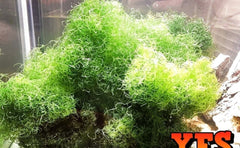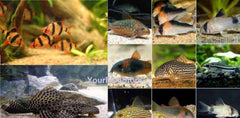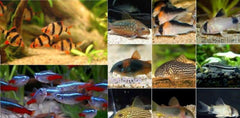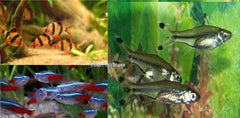Dwarf Lionfish Fish - Med Approx 2" -Dendrochirus Brachypterus

DWARF LIONFISH - MED APPROX 2" -DENDROCHIRUS BRACHYPTERUS - FREE SHIPPING
Minimum Tank Size: 40 gallons
Care Level: Moderate
Temperament: Semi-aggressive
Reef Compatible: With Caution
Water Conditions: 72-78° F, dKH 8-12, pH 8.1-8.4, sg 1.020-1.025
Max. Size: 7"
Description
The Dwarf Lionfish gets it’s name from the fuzzy appendages on it’s ‘antennae’, fins and dorsal spines. Nocturnal by nature, the Fuzzy Dwarf Lionfish will tend to be shy in brightly lit aquariums but will likely adjust with time and make brief appearances. Will always prefer to spend it’s time in caves, overhangs and other shady spots. It is best to keep the Fuzzy Dwarf Lionfish with lesser aggressive tankmates. Fuzzy Dwarf Lionfish may be kept in small groups providing there is no harassment within the group.
Lionfish will eat smaller fishes, ornamental shrimps and crabs. This species is venomous. The pelvic, pectoral and dorsal fins of this animal can cause extreme pain. If allergic, severe reactions can occur. If stung soak injured area in hot water and seek medical attention immediately. Smaller specimens will adapt to captivity and accept captive diets more easily. Lionfish will likely remain hidden in brightly lit aquariums as it prefers dimmer lighting.
Diet
Though we do our best to work with our Lionfish prior to shipping to accept a captive diet, many may revert back to live foods only due to the stress of shipping. Sometimes our Lionfish are not in our facility long enough for us to get very far in this process as well. If your Lionfish is not eating, we recommend feeding live Feeder Shrimp mixed with frozen mysis shrimp. Slowly increase the frozen mysis shrimp and decrease on the live Feeder Shrimp. Eventually cut out the live food all together. This can take a few days or a few weeks depending on the stress level, health, age, and willingness on the individual animal.
Brine Shrimp as a live food source is acceptable providing that you ‘gut load’ the live brine shrimp with phytoplankton, Kent Marine Zoe, Zoecon or any other liquid vitamin. Once past the 24 hour period after hatching, brine shrimp lose their nutritional value as the juveniles (called Artemia) have consumed their egg yolk sac which leaves the Brine Shrimp have little to no nutritional value. ‘Gut Loading’ consists of soaking the Brine Shrimp in a solution of some type of liquid vitamin for about 10 to 15 min. prior to feeding. This ensures that the animal, though hesitant to consume a captive diet, will be getting some sort of nutritional benefit. Frozen Brine Shrimp are dead and unable to consume or soak up any liquid vitamins and are not suitable to use with this method.
QUESTIONS & ANSWERS
Have a Question?
Be the first to ask a question about this.














